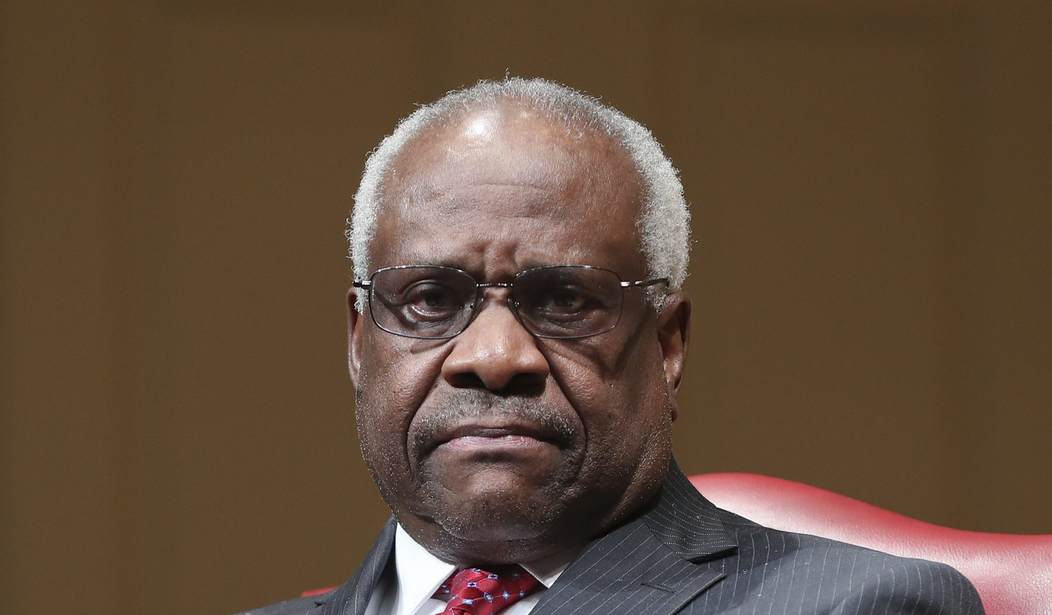Last Thursday, Supreme Court Justice Clarence Thomas opened up about his faith journey, sharing how he fell away from his Catholic faith in law school and found God again in “one of the darkest periods” of his life.
Thomas spoke at the dedication of Christ Chapel at my alma mater, Hillsdale College in southern Michigan. He shared three stories about the spiritual impact of chapels that house the presence and majesty of God. He first mentioned Hannah, the mother of the prophet Samuel, who entered the tabernacle deeply troubled and left her son to serve God, lifting the burden on her soul. “She came to the tabernacle in anguish, she left at peace,” he said.
“Hannah’s story reminds me of a young woman I saw some years ago in the church I attend near the Court,” Thomas continued. “As a I knelt saying the Rosary after Mass, I noticed her crying, her shoulders jerking rhythmically as she sobbed heavily. We happened to leave the church at the same time and as we did, I asked her if she was okay. Her face streaked with mascara, she answered in a quiet, peaceful voice, I am now.”
“Whatever burden that woman was carrying when she entered the church, she did not leave with it. In the words of the letter to the Hebrews, she drew near to the throne of grace and she did so in a church building,” he added.
Then the Supreme Court justice made it personal. He prophesied that many will enter the Hillsdale chapel burdened and leave at rest. “Come to me all who labor and are heavy laden, I will give you rest,” he said, quoting Jesus’ words in Matthew 11:28.
“I humbly offer my own story that is similar. Like Hannah, my life was changed through prayer at a place of worship,” Thomas said.
“Although I was raised Catholic and even spent four years in the seminary, in my early adult years, I became greatly disillusioned with the church and made the mistake of angrily storming away — impetuousness of youth,” he recalled. “Throughout law school and the early years of my career, I was self-reliant — so I thought — and gave little attention to God.”
“But not long after I joined President Reagan’s administration, I was in the midst of one of the darkest periods of my life. I was in my thirties, running a federal agency under significant public scrutiny and criticism. I had little money, I was raising my young son, and I was grieving the loss of the two most important people in my life, my grandparents,” Thomas said. “Life seemed hopeless and I felt like I had nowhere to turn.”
“In the midst of this hardship and grief, God drew me back to the Church, and he used a church building to do it. It was during this period, seemingly bereft of hope, that I began to make visits to local Catholic churches to pray for wisdom and courage as well as strength and guidance,” the Supreme Court justice explained.
“Unlike the tumultuous world around me, the church building provided a place of peace, a sanctuary from the turmoils of my life. Within those walls, with God’s help and grace, I was able to elevate my thoughts beyond my circumstances and self-absorption, and set my mind on things that are above, not on things that are on earth, as Saint Paul wrote in the letter to the Colossians,” he said, quoting Colossians 3:2.
“God used those times of prayer and meditation to rekindle the flame of faith in my life. I am a changed man today and God began that transformation in a holy place, a sanctuary much like this chapel where I could temporarily leave behind the onslaught of life’s difficulties and bring my troubles before the Lord,” Thomas added. “God used this renewed faith to sustain me and my wife through my confirmation hearings and we continue to rely daily on the grace He gives us.”
Although his personal story highlighted the power of a sanctuary, Thomas insisted that “there’s nothing unique about this in our lives.” He noted that “chapels and churches have served as beacons of hope, physical reminders of our need for God and His grace.”
The Supreme Court justice insisted that the presence of a chapel on a college campus is particularly significant because it stands as “a public declaration that faith and reason are mutually reinforcing.”
“Christ Chapel reflects the college’s conviction that a vibrant intellectual environment and a strong democratic society are fostered, not hindered, by a recognition of the divine,” Thomas declared. This new chapel “affirms with the writer of Proverbs that ‘the fear of the Lord is the beginning of wisdom and knowledge of the holy one is insight'” (Proverbs 9:10).
The Supreme Court justice closed his dedication by noting the importance of religion to the project of American freedom. “A correct understanding of the nature of God and the human person is critical to preserving the liberty that we so enjoy,” he warned.
Thomas’s point about the importance of a chapel as a place to seek God’s presence, comfort, and wisdom is spot on. Throughout my time at Hillsdale, I spent many hours in the small side chapel of the Fred Knorr memorial student center. During Maundy Thursday one year, I gathered three friends and we spent four hours praying and reading through the Maundy Thursday passages in the Gospels in a kind of vigil to stay awake when the disciples failed to stay awake before Jesus’s arrest.
During times of confusion, I sought peace in that small chapel. Physically kneeling before that simple wooden cross gave me direction, comfort, and purpose.
As an Anglican, I love grand cathedrals, and have stood in awe of the majesty of God evoked by St. Mark’s Cathedral in Venice, St. Peter’s Basilica in the Vatican, Bayeux Cathedral in France, and even the National Cathedral in Washington, D.C. I vividly remember the stained glass windows at the church where my wife and I were married.
The church building is not the Church, and the Holy Spirit can inspire those who believe in Jesus wherever they may be. The smallest building can be a chapel if it is dedicated to the Lord. Yet there is something magnificent about the old cathedrals and Thomas is right to say that building a large chapel dedicated to the Glory of God is a statement about what is truly important.
My church, Falls Church Anglican, just dedicated a new church building. Seven years after we left our old building — taken from us by the Episcopal Church after a long legal battle — it felt like coming home when we held the first service in the new sanctuary, with its vaulted ceiling, high windows, and impressive modern acoustics. Ultimately, it is only a taste of the presence of God, but this new building will serve as a sanctuary, bringing peace and direction under the iconic cross atop it.
Majestic old cathedrals have been called “sermons in stone.” They make the glory of God palpable to mortal men and women — and they provide a haven in a tumultuous world. Modern church buildings hold the same promise, especially when they represent a huge investment of time and resources. Hillsdale’s new chapel makes a statement, and Clarence Thomas is likely right that many students will find a powerful sanctuary there — and experience the presence of God.
Watch the video below. Thomas’s speech comes about 44 minutes in.
The Dedication of Christ Chapel
Please join us live at 9:30 AM for the dedication of Christ Chapel with remarks given by Justice Clarence Thomas,Associate Justice of the United States Supreme Court.
Posted by Hillsdale College on Thursday, October 3, 2019
Follow Tyler O’Neil, the author of this article, on Twitter at @Tyler2ONeil.









Join the conversation as a VIP Member